There’s something about old video game music that sticks with us. Even years after we’ve stopped playing, the tunes linger. The opening theme from Super Mario Bros., the battle music from Pokémon Red and Blue, or the eerie melodies of Metroid stay in our heads. Many of these tracks are still considered some of the best songs from video games. But why? It’s not just nostalgia. It’s about design, creativity, and emotional connection. These early soundtracks weren’t just background noise. They were core parts of the experience.
Limited Tech, Big Creativity
 In the 1980s and 1990s, game consoles had major limitations. The NES, for example, could only produce a few sounds at once. Composers worked with just a handful of audio channels. There were no live instruments and no digital samples. Just pure code-driven tones. Because of this, game composers had to be smart. They focused on strong melodies. These melodies had to be simple, catchy, and loop well. It was a challenge that sparked innovation. Koji Kondo’s work on Super Mario Bros. is a classic example. The main theme is short and repetitive, yet incredibly memorable. Why? It fits the rhythm of the game. It matches the mood. It’s carefully composed within tight limits. This kind of creative constraint led to some of the most iconic tracks in gaming history.
In the 1980s and 1990s, game consoles had major limitations. The NES, for example, could only produce a few sounds at once. Composers worked with just a handful of audio channels. There were no live instruments and no digital samples. Just pure code-driven tones. Because of this, game composers had to be smart. They focused on strong melodies. These melodies had to be simple, catchy, and loop well. It was a challenge that sparked innovation. Koji Kondo’s work on Super Mario Bros. is a classic example. The main theme is short and repetitive, yet incredibly memorable. Why? It fits the rhythm of the game. It matches the mood. It’s carefully composed within tight limits. This kind of creative constraint led to some of the most iconic tracks in gaming history.
Music That Becomes Memory
Old video game music wasn’t just well-written it was repeated often. Players heard the same songs over and over as they played levels again and again. This constant exposure made those tunes stick. They became part of the game’s identity. Think about Tetris and its “Type A” music. It’s more than just a tune. It’s a mental trigger. Hearing it brings back the feeling of falling blocks and rising tension. These associations are strong and long-lasting. Psychologists call this “musical nostalgia.” When we hear a song tied to a specific memory or period, we re-experience those feelings. In gaming, those feelings often include joy, challenge, excitement, or accomplishment.
Simplicity That Lasts
Older game music is often very simple. But that simplicity is a strength. Without complex production layers, the focus is on melody and rhythm. This directness makes the music easy to remember. A lot of modern game scores sound like movie soundtracks. They’re polished, cinematic, and layered. But many aren’t as hummable. You can’t always recall a melody after playing. In contrast, you can probably whistle the Zelda theme from memory. The best video game soundtracks from the early days were built to endure. Their clarity and structure give them a timeless appeal.
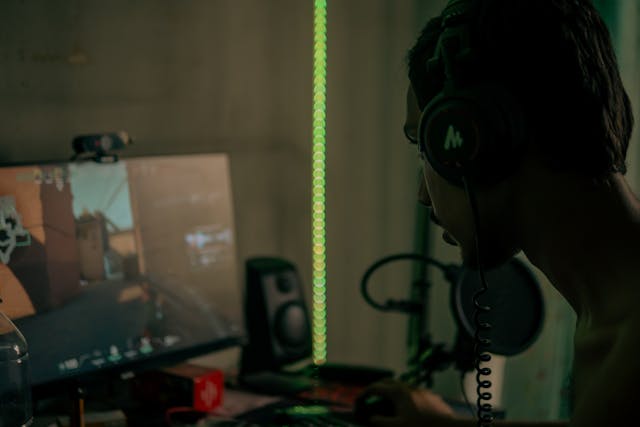
A Unique Sound Signature
Chiptune music the style used in many retro games has a very distinct sound. It’s made from synthesized square waves, triangle waves, and noise channels. These tones give the music a bright, punchy, digital feel. This sound is instantly recognizable. It’s like a signature of a generation. For players who grew up with these games, the audio is tied to childhood. For younger players, it offers a different kind of charm retro coolness, and authenticity. Today, many indie games use this style on purpose. Games like Shovel Knight and Undertale use retro-inspired music to tap into that emotional space. They blend new gameplay with familiar sounds.
Modern Impact and Resurgence
Old game music isn’t just remembered it’s celebrated. Live concerts like Video Games Live and The Legend of Zelda: Symphony of the Goddesses showcase these tracks with full orchestras. Fans fill arenas to hear songs they played decades ago. Online, remixes and covers are everywhere. Musicians on YouTube and Spotify reimagine these classic themes in rock, jazz, and electronic styles. Nostalgia fuels demand, but creativity keeps it alive. Streaming platforms now offer entire libraries of retro game soundtracks. They’re used as background music for studying, working, and relaxing. The tracks create comfort and focus. They’re more than memories they’re part of our daily lives.
Emotional Weight and Legacy
Old game music carries emotional weight. It represents a time when gaming was new, and everything felt magical. It brings back the feeling of sitting on the floor, controller in hand, fully absorbed in a digital world. These memories stay sharp. For many, the music is a portal. One track can bring back whole scenes: a final boss, a tricky jump, or a long-lost save file. Game developers today understand this. They often include nods to classic soundtracks in reboots and sequels. It helps bridge generations of players. It shows respect for the past while building something new.
In Conclusion
We still love old video game music because it was built to be remembered. It was simple, catchy, and emotionally charged. It had to be. The tech was limited, but the creativity was not. These tracks became part of our gaming identity. They help define what made those games special. Even today, with all the advances in graphics and sound, those early melodies still connect with us.…

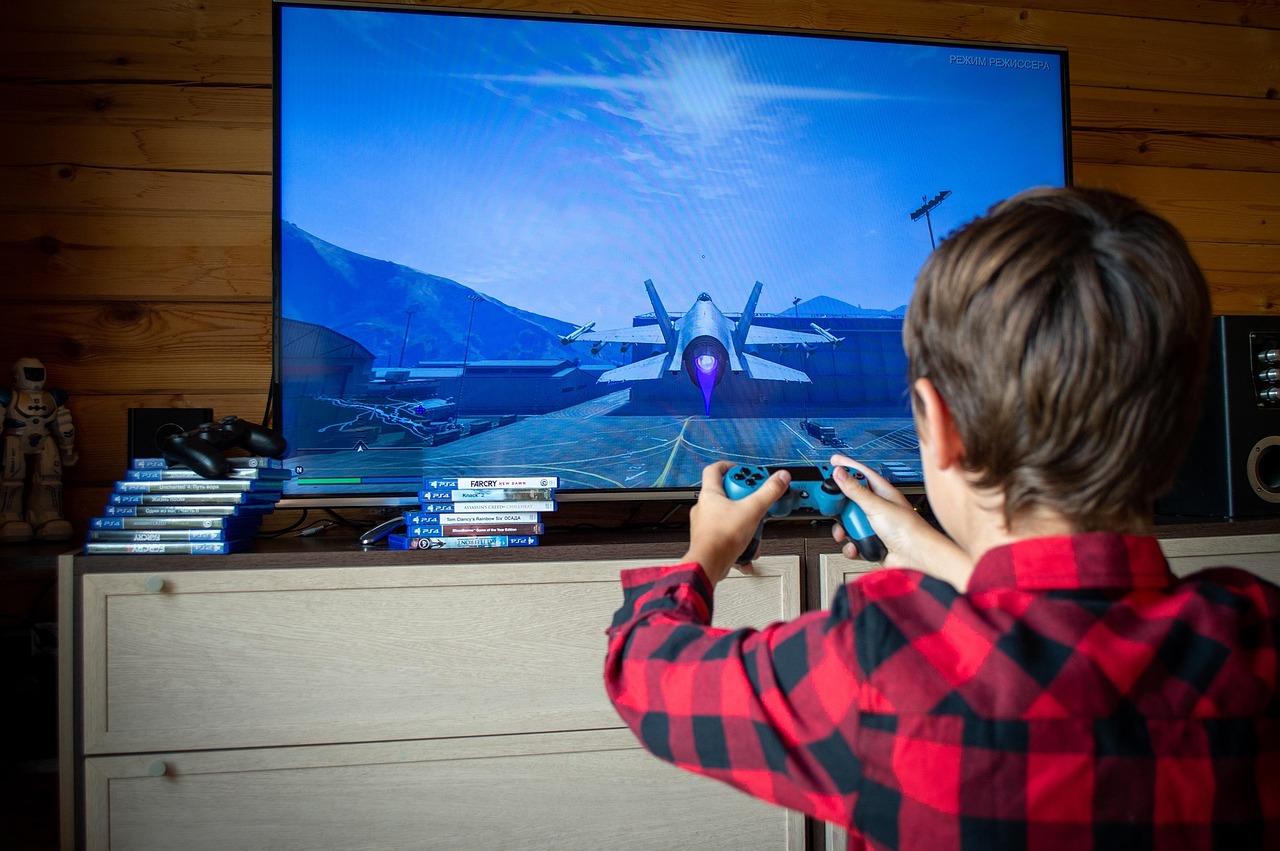



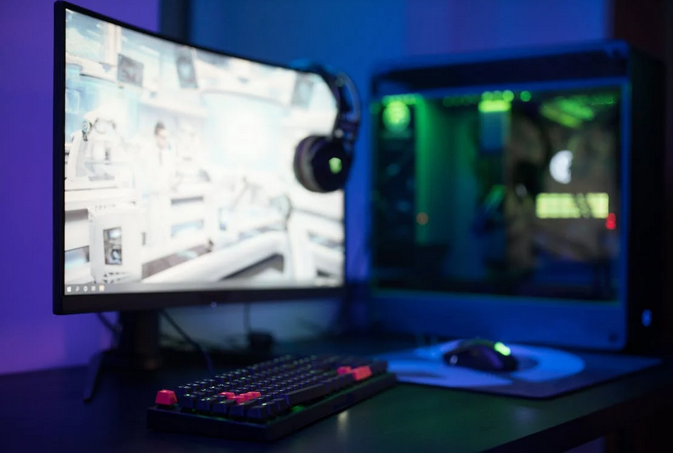
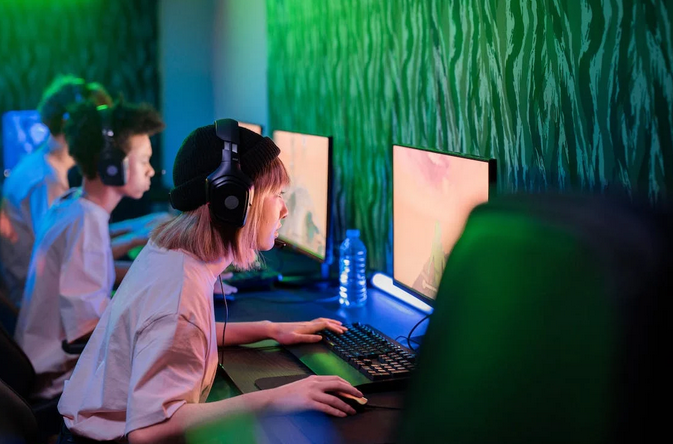
 Harvest Moon: Winds of Anthos is a delightful RPG farm-life simulation game that transports you to the enchanting world of Anthos. As soon as you begin playing, you’ll find yourself immersed in a captivating storyline filled with intriguing characters and heartwarming moments. The vibrant colors and detailed landscapes truly bring Anthos to life, making it a joy to explore every nook and cranny.
Harvest Moon: Winds of Anthos is a delightful RPG farm-life simulation game that transports you to the enchanting world of Anthos. As soon as you begin playing, you’ll find yourself immersed in a captivating storyline filled with intriguing characters and heartwarming moments. The vibrant colors and detailed landscapes truly bring Anthos to life, making it a joy to explore every nook and cranny.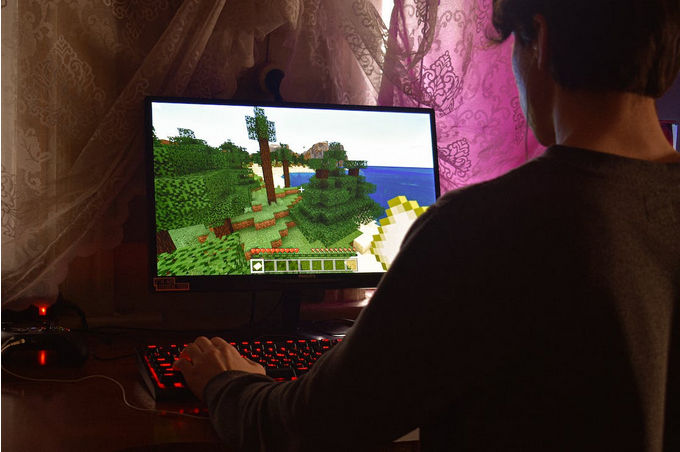
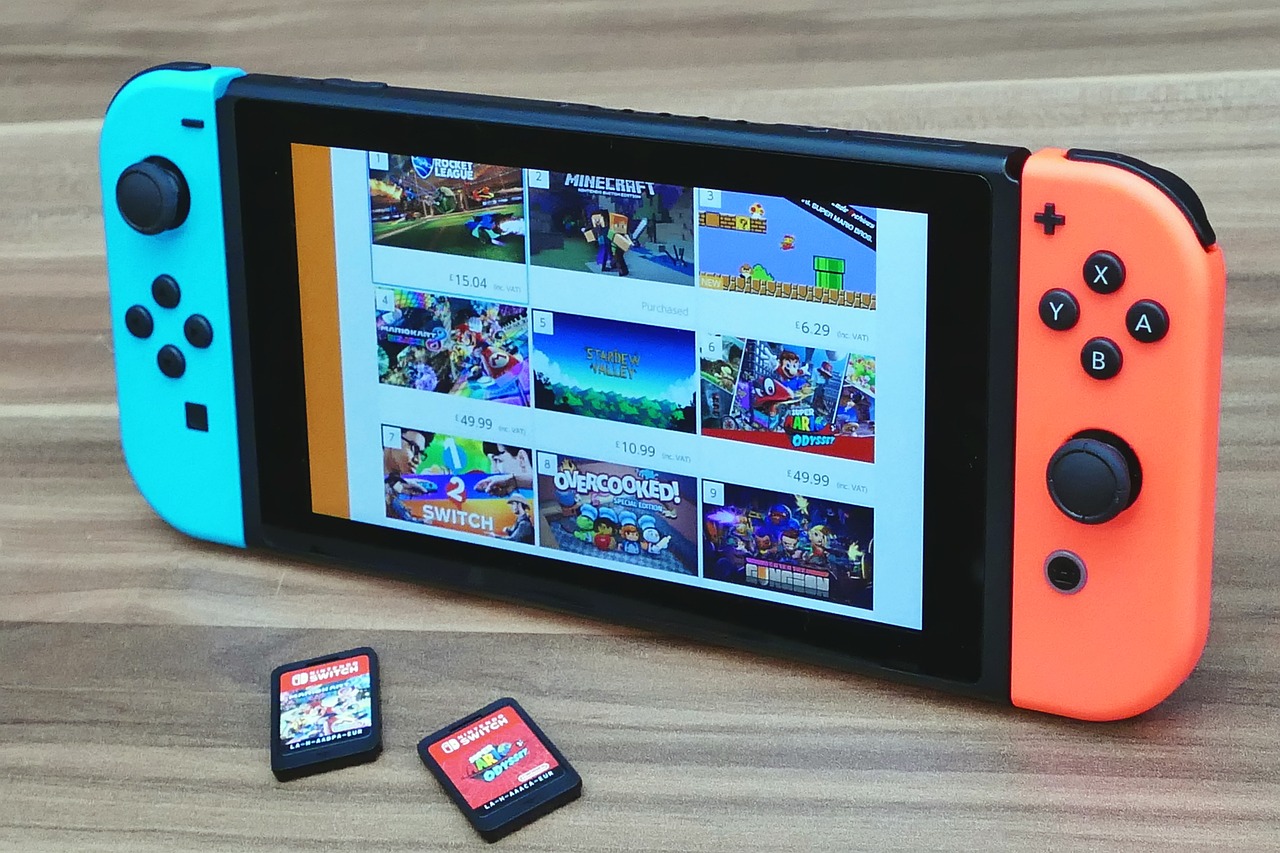
 One of the best ways to enjoy “Animal Crossing: New Horizons” with your friends is by visiting each other’s islands and exchanging gifts. This can be done in various ways, such as using a local wireless connection or via the internet. When you visit a friend’s island, you can explore it together and gather items that aren’t available on your own island. And you can also send each other gifts, such as fish, bugs, furniture, and even clothing items to spruce up your character’s wardrobe.
One of the best ways to enjoy “Animal Crossing: New Horizons” with your friends is by visiting each other’s islands and exchanging gifts. This can be done in various ways, such as using a local wireless connection or via the internet. When you visit a friend’s island, you can explore it together and gather items that aren’t available on your own island. And you can also send each other gifts, such as fish, bugs, furniture, and even clothing items to spruce up your character’s wardrobe.
 A great way to spend your weekend is by attending events. There are always things happening in your community, so take advantage. Check out your local paper or website to see what’s going on. You can usually find concerts, festivals, and other fun activities. This is a great way to meet new people and explore your town or city. If you are from Finland, check out
A great way to spend your weekend is by attending events. There are always things happening in your community, so take advantage. Check out your local paper or website to see what’s going on. You can usually find concerts, festivals, and other fun activities. This is a great way to meet new people and explore your town or city. If you are from Finland, check out  Museums are great places to learn about new things and have fun simultaneously. Most museums have interactive exhibits that are perfect for a weekend outing. If you’re looking for something different, try visiting a museum outside your usual interests. You might be surprised at how much you enjoy it. If you are the type of person who loves art, we recommend visiting the Ateneum Art Museum.
Museums are great places to learn about new things and have fun simultaneously. Most museums have interactive exhibits that are perfect for a weekend outing. If you’re looking for something different, try visiting a museum outside your usual interests. You might be surprised at how much you enjoy it. If you are the type of person who loves art, we recommend visiting the Ateneum Art Museum. Theme parks are always a lot of fun, no matter your age. If you’re looking for thrills, there are plenty of roller coasters and other rides to get your heart racing. Or, if you’d prefer something more relaxed, most parks also have shows and other attractions. This is a great option if you’re traveling with kids. They’ll be sure to have a blast. If you have kids, or are just a big kid at heart, we recommend that you first do this. Whether you’re looking for a new activity to try or just want some ideas on how to make the most of your weekends, we hope this list has inspired you.
Theme parks are always a lot of fun, no matter your age. If you’re looking for thrills, there are plenty of roller coasters and other rides to get your heart racing. Or, if you’d prefer something more relaxed, most parks also have shows and other attractions. This is a great option if you’re traveling with kids. They’ll be sure to have a blast. If you have kids, or are just a big kid at heart, we recommend that you first do this. Whether you’re looking for a new activity to try or just want some ideas on how to make the most of your weekends, we hope this list has inspired you.
 One of the most exciting things about numerology is that everyone has a personal life path number. This number is based on your birth date, representing who you are at your core. It can tell you much about your personality, strengths and weaknesses, and potential future.
One of the most exciting things about numerology is that everyone has a personal life path number. This number is based on your birth date, representing who you are at your core. It can tell you much about your personality, strengths and weaknesses, and potential future. Numerology can also help you make better decisions and plan for the future. Understanding your vibration allows you to make choices aligned with your true self. It can lead to a more fulfilling life overall. If you’re ready to take control of your life, a numerology reading can help you get started. Just be sure to find a reputable numerologist to work with.
Numerology can also help you make better decisions and plan for the future. Understanding your vibration allows you to make choices aligned with your true self. It can lead to a more fulfilling life overall. If you’re ready to take control of your life, a numerology reading can help you get started. Just be sure to find a reputable numerologist to work with.
 The first step in finding a clan is to search for clans within the game. To do this, open up Clash of Clans and tap on the “Clans” tab. You can either search for specific clans or browse through the list of available lines. When browsing through the list of clans, you can filter them by several different criteria, such as clan size, location, and more. If you’re not sure what kind of clan you’re looking for, try searching for clans in your area.
The first step in finding a clan is to search for clans within the game. To do this, open up Clash of Clans and tap on the “Clans” tab. You can either search for specific clans or browse through the list of available lines. When browsing through the list of clans, you can filter them by several different criteria, such as clan size, location, and more. If you’re not sure what kind of clan you’re looking for, try searching for clans in your area.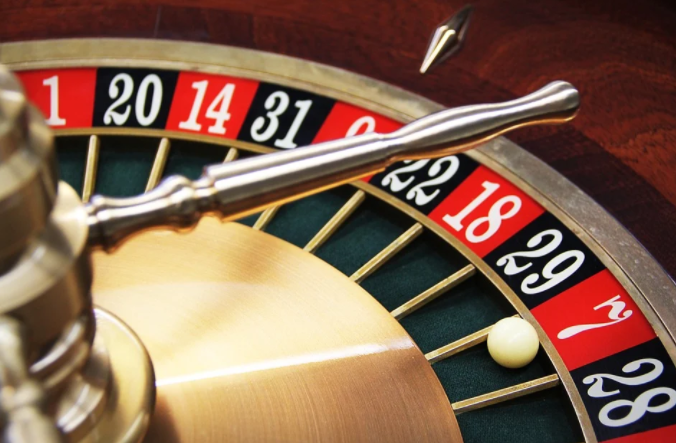
 A life path number is a number that is derived from your birth date. It is said to represent who you are at your core, and it can give insight into your journey in this lifetime. There are many interpretations of what each life path number means, but they can represent your talents, challenges, and lessons. To calculate your life path number, add up all the digits in your birth date until you get a single-digit number.
A life path number is a number that is derived from your birth date. It is said to represent who you are at your core, and it can give insight into your journey in this lifetime. There are many interpretations of what each life path number means, but they can represent your talents, challenges, and lessons. To calculate your life path number, add up all the digits in your birth date until you get a single-digit number.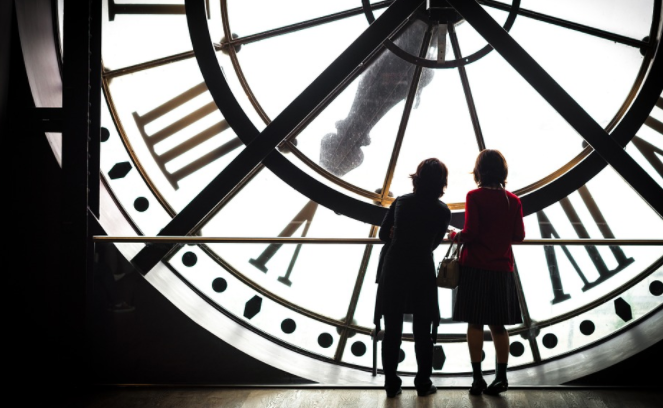 If you have a master number (11, 22, or 33), this means that you have the potential to express the highest qualities of that number. For example, people with a master number 11 are incredibly intuitive and spiritually aware.
If you have a master number (11, 22, or 33), this means that you have the potential to express the highest qualities of that number. For example, people with a master number 11 are incredibly intuitive and spiritually aware.
 There are many different styles to choose from when it comes to ash catcher percolators. You can find them in diffusers, recyclers, or hybrids. Each type has its unique benefits and drawbacks. If you’re not sure which style of ash catcher percolator is best for you, start by thinking about your preferred smoking experience. Do you like big, smooth hits? If so, you may want to try an ash catcher percolator with a diffuser. Diffusers help to break up the smoke and create more giant bubbles. It results in smoother hits that are less harsh on your lungs.
There are many different styles to choose from when it comes to ash catcher percolators. You can find them in diffusers, recyclers, or hybrids. Each type has its unique benefits and drawbacks. If you’re not sure which style of ash catcher percolator is best for you, start by thinking about your preferred smoking experience. Do you like big, smooth hits? If so, you may want to try an ash catcher percolator with a diffuser. Diffusers help to break up the smoke and create more giant bubbles. It results in smoother hits that are less harsh on your lungs. Like with the joint angle, you need to ensure that the ash catcher percolator has a specific joint size that matches your bong. If the joint size doesn’t match, it won’t fit properly and could potentially cause damage to your bong. You can find information about the joint sizes of ash catcher percolators online or in the product descriptions.
Like with the joint angle, you need to ensure that the ash catcher percolator has a specific joint size that matches your bong. If the joint size doesn’t match, it won’t fit properly and could potentially cause damage to your bong. You can find information about the joint sizes of ash catcher percolators online or in the product descriptions.
 If you wish to become a celebrity, you can start your journey to become an Instagram celebrity. However, if you want to do so, you need to gain more fame, turning to more social credibility. Therefore, you need to buy Instagram likes and followers. This way, you can gain more followers and build a wide range of social audiences that will become your fans. However, make sure to be professional when handling your account.
If you wish to become a celebrity, you can start your journey to become an Instagram celebrity. However, if you want to do so, you need to gain more fame, turning to more social credibility. Therefore, you need to buy Instagram likes and followers. This way, you can gain more followers and build a wide range of social audiences that will become your fans. However, make sure to be professional when handling your account. If you choose to use your Instagram profile account for your business, buying Instagram followers and likes can also help you develop your brand. This way, you can grow your business and gain more income. As you gain more followers, more people will see your marketing campaign, which leads to more people buying or using your products. What’s best about it is that you can use this strategy as a marketing tool to grow your business and gain profit.
If you choose to use your Instagram profile account for your business, buying Instagram followers and likes can also help you develop your brand. This way, you can grow your business and gain more income. As you gain more followers, more people will see your marketing campaign, which leads to more people buying or using your products. What’s best about it is that you can use this strategy as a marketing tool to grow your business and gain profit.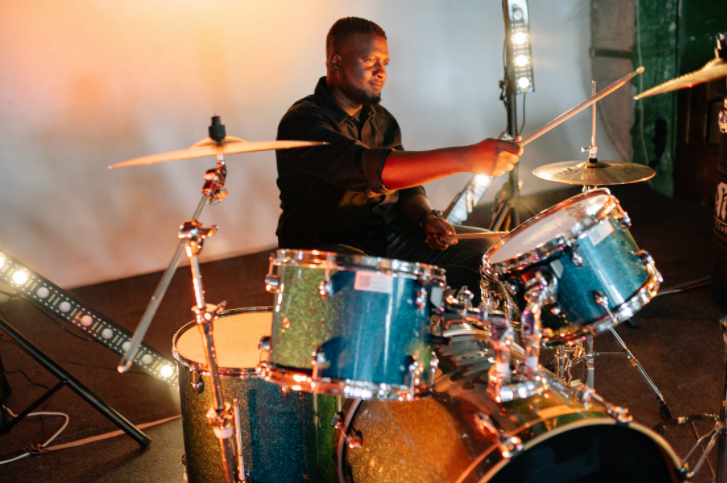
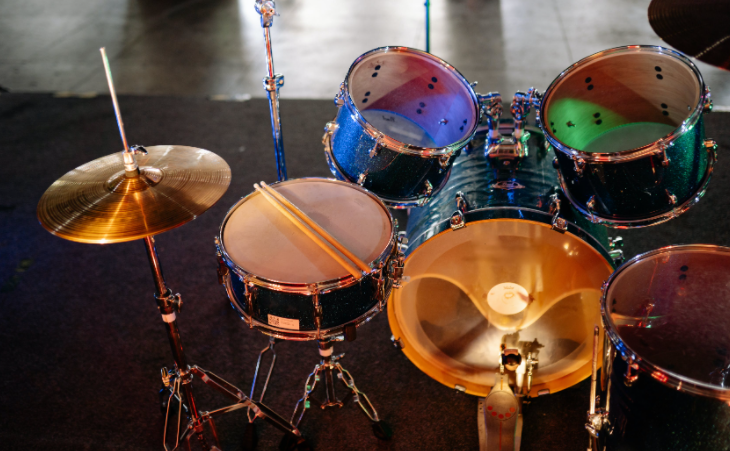
 When shopping for drums, you often hear two terms: “kettle pack” or “complete set.” A kettle pack is a drum set that includes rack toms (floor toms), floor toms, a bass drum, and in some cases, a snare drum. If you want to upgrade from a beginner set, a shell pack is of professional quality. The cymbals, bass drum pedal, hardware, and throne are not included in the shell pack. You should buy a Shell Pack if you are looking for your first drum kit. A complete drum kit usually includes everything you need to start playing drums as a beginner. This consists of a snare drum and cymbals and hardware, throne, hardware, and even drumsticks.
When shopping for drums, you often hear two terms: “kettle pack” or “complete set.” A kettle pack is a drum set that includes rack toms (floor toms), floor toms, a bass drum, and in some cases, a snare drum. If you want to upgrade from a beginner set, a shell pack is of professional quality. The cymbals, bass drum pedal, hardware, and throne are not included in the shell pack. You should buy a Shell Pack if you are looking for your first drum kit. A complete drum kit usually includes everything you need to start playing drums as a beginner. This consists of a snare drum and cymbals and hardware, throne, hardware, and even drumsticks.
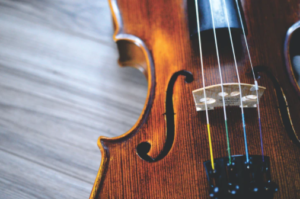 Let’s begin with the most familiar instrument, the violin. The violin is the smallest member of the string family and produces high-pitched sounds. The neck, body, and bow are the three main parts of the violin. The neck controls the instrument’s pitch, while the body allows you to move the bow along the strings to create music. You should place the instrument’s bottom side on your left shoulder to hold it correctly. It is easy to control the violin this way. The violin is ideal for beginners looking to learn how to play a lightweight string instrument.
Let’s begin with the most familiar instrument, the violin. The violin is the smallest member of the string family and produces high-pitched sounds. The neck, body, and bow are the three main parts of the violin. The neck controls the instrument’s pitch, while the body allows you to move the bow along the strings to create music. You should place the instrument’s bottom side on your left shoulder to hold it correctly. It is easy to control the violin this way. The violin is ideal for beginners looking to learn how to play a lightweight string instrument. The mandolin is a great choice if you are looking for a similar instrument to the guitar. The mandolin doesn’t require a bow, unlike the viola or the violin. To be able to use it, however, you will need to buy a pick. Musical experts explain that there are two main types of mandolins. Flat design mandolins of the A-style style resemble the shape and letter “A”. It is easier to control for beginners. F-style mandolins, on the other hand, are more costly and more difficult to control. This makes them more suitable for more experienced musicians.
The mandolin is a great choice if you are looking for a similar instrument to the guitar. The mandolin doesn’t require a bow, unlike the viola or the violin. To be able to use it, however, you will need to buy a pick. Musical experts explain that there are two main types of mandolins. Flat design mandolins of the A-style style resemble the shape and letter “A”. It is easier to control for beginners. F-style mandolins, on the other hand, are more costly and more difficult to control. This makes them more suitable for more experienced musicians. The harp can sound almost like a piano, and it’s a very unusual instrument. The harp has 47 strings and each one produces a different sound. Foot pedals can be used to control the pitch of each string. Because the harp’s size is so large, players must sit down to control it properly. The harp’s music is classically arranged and has a vintage, dreamy feel. It can be difficult to choose the right one for you because there are so many options. These instruments can be played with your fingers, while some require a pick or bow.…
The harp can sound almost like a piano, and it’s a very unusual instrument. The harp has 47 strings and each one produces a different sound. Foot pedals can be used to control the pitch of each string. Because the harp’s size is so large, players must sit down to control it properly. The harp’s music is classically arranged and has a vintage, dreamy feel. It can be difficult to choose the right one for you because there are so many options. These instruments can be played with your fingers, while some require a pick or bow.…
 Meanwhile, some other musicians may perceive this trend as a threat since copyright infringement doesn’t seem easy to tackle or stop. However, fans are discovering that free clips embody all that is excellent on the internet. There are several types of music videos for your enjoyment, and they are just a mouse click away. Let’s look deeper into the two most favorite platforms of
Meanwhile, some other musicians may perceive this trend as a threat since copyright infringement doesn’t seem easy to tackle or stop. However, fans are discovering that free clips embody all that is excellent on the internet. There are several types of music videos for your enjoyment, and they are just a mouse click away. Let’s look deeper into the two most favorite platforms of  Do you wish to perform your songs and are interested in being recognized? If yes is your answer, then posting your original music video on YouTube can help you getting exposure and awareness. Take the example of Chris Crocker. He made an art raving about Britney Spears, and it scored him a spotlight in Weezer’s recent music video. Besides, if you are famous and popular, you may obtain a recording contract with recognized record labels, like Terra Naomi’s music clips that lead her to Island Records. Another YouTube celebrity, Esmee Denters earn the attention of Tennman Records and Justin Timberlake for her music video.
Do you wish to perform your songs and are interested in being recognized? If yes is your answer, then posting your original music video on YouTube can help you getting exposure and awareness. Take the example of Chris Crocker. He made an art raving about Britney Spears, and it scored him a spotlight in Weezer’s recent music video. Besides, if you are famous and popular, you may obtain a recording contract with recognized record labels, like Terra Naomi’s music clips that lead her to Island Records. Another YouTube celebrity, Esmee Denters earn the attention of Tennman Records and Justin Timberlake for her music video. MySpace Videos have picked up the steam, although it has some lacks compared to the well-established YouTube. On this platform, you can enjoy watching some music videos from your favorite band to elevate your spirit before coming to their live concert. Suppose you want to relive your childhood and have an 80’s music video marathon. You can drool over the clips on MySpace or even upload them to your social media profile.
MySpace Videos have picked up the steam, although it has some lacks compared to the well-established YouTube. On this platform, you can enjoy watching some music videos from your favorite band to elevate your spirit before coming to their live concert. Suppose you want to relive your childhood and have an 80’s music video marathon. You can drool over the clips on MySpace or even upload them to your social media profile. 
 This can help you succeed in different areas of your life, such as your career. There are some additional benefits to playing online with other men and women. Team play can improve your communication and teamwork skills.
This can help you succeed in different areas of your life, such as your career. There are some additional benefits to playing online with other men and women. Team play can improve your communication and teamwork skills.
 Coin boosts are a great way to get cheap FIFA coins. Using a coin boost can increase the number of coins you earn from matches by up to 500%. This is a great way to quickly and easily stock up on coins without spending any real-world money. Navigate to the in-game store to use a coin boost and purchase one. Once you have activated the coin boost, it will run for a set amount of time – usually 24 hours. Any coins you earn from matches will be multiplied by the boost percentage during this time.
Coin boosts are a great way to get cheap FIFA coins. Using a coin boost can increase the number of coins you earn from matches by up to 500%. This is a great way to quickly and easily stock up on coins without spending any real-world money. Navigate to the in-game store to use a coin boost and purchase one. Once you have activated the coin boost, it will run for a set amount of time – usually 24 hours. Any coins you earn from matches will be multiplied by the boost percentage during this time.
 The best technique to live with football is to name the game outcome and play with them. Whalebets is an incredible illustration of type speculators assuming a crucial part in this game’s wagering. Isn’t it ideal to have the option to get an excellent arrangement of cash when watching the game in the solace of your couch in your general vicinity? Specially made projects and web-based media strategies are getting more intuitive than in the past. Each group had a committed fan club that had embraced various plans. Accordingly, the fans accepted that numerous activities through FIFA’s social channels broke every record. They likewise presented a pristine client care include, which raises response times.
The best technique to live with football is to name the game outcome and play with them. Whalebets is an incredible illustration of type speculators assuming a crucial part in this game’s wagering. Isn’t it ideal to have the option to get an excellent arrangement of cash when watching the game in the solace of your couch in your general vicinity? Specially made projects and web-based media strategies are getting more intuitive than in the past. Each group had a committed fan club that had embraced various plans. Accordingly, the fans accepted that numerous activities through FIFA’s social channels broke every record. They likewise presented a pristine client care include, which raises response times. There may be several reasons for this; nevertheless, their love for soccer begins long before faculty or sometimes even throughout their school years. You will see many women and men with great soccer conversations and excellent soccer enthusiasm, but they know almost nothing about soccer fundamentals. But some people now love soccer. Men fans have united forces in courses to pursue or fight a typical ribbon. We think that the requirement to be part of something bigger, to achieve our goals collectively.
There may be several reasons for this; nevertheless, their love for soccer begins long before faculty or sometimes even throughout their school years. You will see many women and men with great soccer conversations and excellent soccer enthusiasm, but they know almost nothing about soccer fundamentals. But some people now love soccer. Men fans have united forces in courses to pursue or fight a typical ribbon. We think that the requirement to be part of something bigger, to achieve our goals collectively.
 Many are much happier than a single day’s travel. But if you try to learn more about the wonderful Wall Biking, you can enjoy it a lot. For example, you can stay in boutique hotels near the wall and sleep in a watchtower. A helicopter ride can also be accessible to a tourist, and if you expect something so bold, stay a player.
Many are much happier than a single day’s travel. But if you try to learn more about the wonderful Wall Biking, you can enjoy it a lot. For example, you can stay in boutique hotels near the wall and sleep in a watchtower. A helicopter ride can also be accessible to a tourist, and if you expect something so bold, stay a player. To take advantage of the walks, it is always advisable to take a spring or autumn trip. It can be extremely difficult. So invest your energy and time to achieve this growth, an increase in your life. Therefore hiking must be one of your best
To take advantage of the walks, it is always advisable to take a spring or autumn trip. It can be extremely difficult. So invest your energy and time to achieve this growth, an increase in your life. Therefore hiking must be one of your best 

 Take this impulse with caution. If you have the energy, try a new recipe, experiment with house repairs, learn a contemporary dance at TikTok. Doing new things dispels boredom and helps to acquire new skills and knowledge that can ward off boredom in the long term. For example, we feel a more significant interest when we read an exciting book,
Take this impulse with caution. If you have the energy, try a new recipe, experiment with house repairs, learn a contemporary dance at TikTok. Doing new things dispels boredom and helps to acquire new skills and knowledge that can ward off boredom in the long term. For example, we feel a more significant interest when we read an exciting book, 
 Don’t elect for Dynamic Currency Conversion (DCC) when using your credit or debit card. DAC applies to transactions from which ATMs or retailers
Don’t elect for Dynamic Currency Conversion (DCC) when using your credit or debit card. DAC applies to transactions from which ATMs or retailers 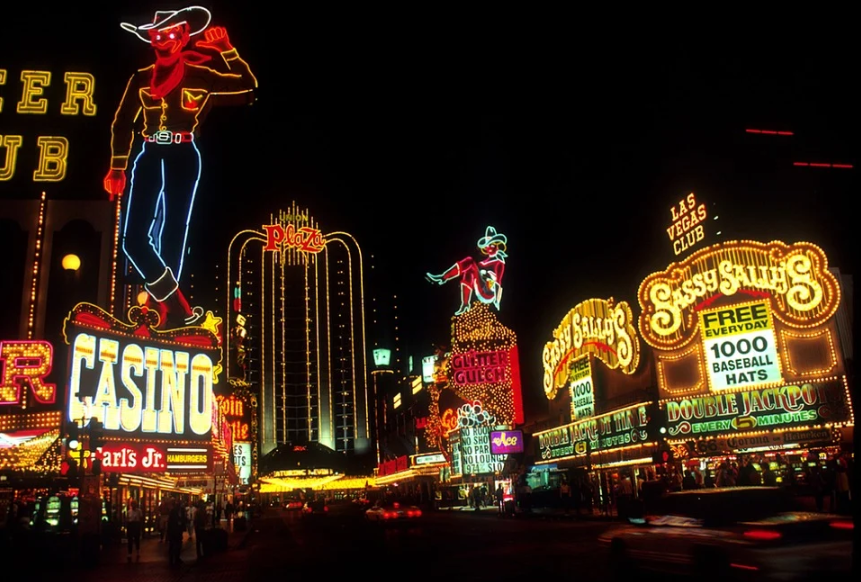
 The
The  You might choose to keep here for your upscale hotel experience, exceptional dining choices, and pool, but there is no need to depart to watch soccer. Mandalay Bay has a great sports publication housed in a spacious, open space with seating for 300 and several jumbo TVs. Allow enough time before kick-off on Sunday morning (recall, NFL games begin at 10:00 a.m. Las Vegas period ) to possess gospel brunch at the neighboring House of Blues. Following the match, investigate the world of exotic marine predators in the hotel’s Shark Reef Aquarium. The Mirage boasts a destination”megabook” with stadium seating and many large screen TVs for viewing the matches. Bettors beverage free of charge and food can be found nearby at California Pizza Kitchen and Carnegie Deli.
You might choose to keep here for your upscale hotel experience, exceptional dining choices, and pool, but there is no need to depart to watch soccer. Mandalay Bay has a great sports publication housed in a spacious, open space with seating for 300 and several jumbo TVs. Allow enough time before kick-off on Sunday morning (recall, NFL games begin at 10:00 a.m. Las Vegas period ) to possess gospel brunch at the neighboring House of Blues. Following the match, investigate the world of exotic marine predators in the hotel’s Shark Reef Aquarium. The Mirage boasts a destination”megabook” with stadium seating and many large screen TVs for viewing the matches. Bettors beverage free of charge and food can be found nearby at California Pizza Kitchen and Carnegie Deli.
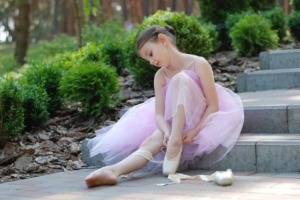 The motions might contain leaps and are optimistic, jumps, spins, and much more. Female dancers wear clothing, like shorts or trousers with blouse shirts or shirts, while
The motions might contain leaps and are optimistic, jumps, spins, and much more. Female dancers wear clothing, like shorts or trousers with blouse shirts or shirts, while 


 Angry Birds is among the most well-known games. In this
Angry Birds is among the most well-known games. In this  Drag racing game mimics the traditional racing games. It’s an intriguing match involving two cars on a track. The game is won by the car between the two, which is the fastest. This sport has a vast choice of vehicles.
Drag racing game mimics the traditional racing games. It’s an intriguing match involving two cars on a track. The game is won by the car between the two, which is the fastest. This sport has a vast choice of vehicles.
 If you have a fit family, this is a great way to laugh, talk, compete with each other, and get out of the house. Oh, and burn some desperately needed calories! Play afternoons are and remain a way to forget your family’s fears and also to become ridiculously aggressive.
If you have a fit family, this is a great way to laugh, talk, compete with each other, and get out of the house. Oh, and burn some desperately needed calories! Play afternoons are and remain a way to forget your family’s fears and also to become ridiculously aggressive.